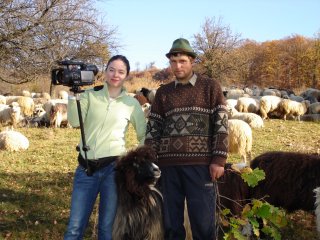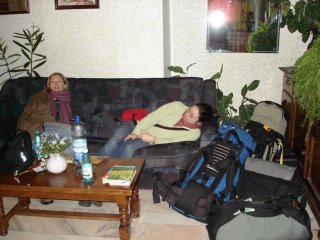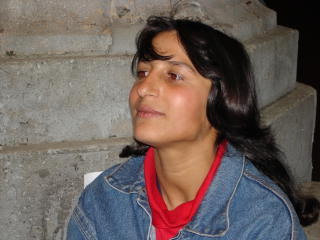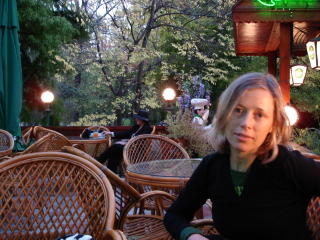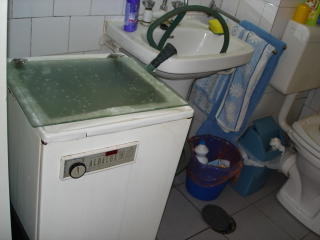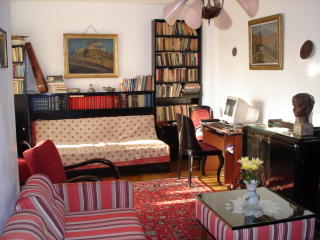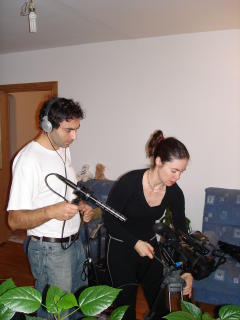Ciobanas cu 300 de oi (Shepherd with 300 sheep)
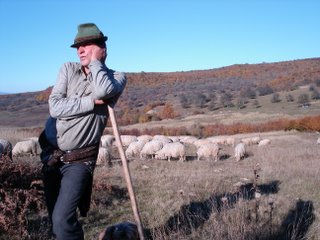
This is the title of a popular Romanian folk song...
Shepherds are mythical figures that still exist in Romania. Popular folklore is full of songs and stories about shepherds who symbolize the union between man and nature in this idyllic country.
Whatever the symbolism, I think shepherds are just plain cool, and would gladly exchange my high-tech job with a shepherd's job (but only for a little while!). So, one day, when we ran into couple of shepherds on the side of the road, we took the opportunity to visit their quarters and learn more about their lifestyle.
If you want to step back in time, all you have to do is visit a shepherd's hut in Transylvania. During the summer months these temporary shelters serve as sleeping quarters, a kitchen and, of course, a cheese-making factory.
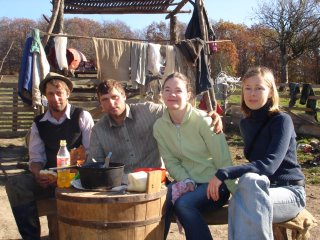
The two brothers we visited, Vasile and Iosif, were so happy to see us that they quickly invited us to a traditional meal of "mamaliga cu branza" (polenta with cheese). But first we had to toast the "tuica", the local plum brandy, which is an absolute necessity to lubricate the meal.
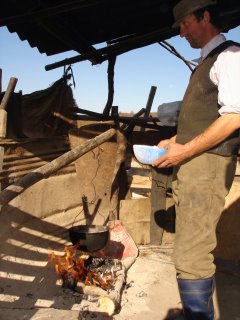 Then, they fired off the "stove" with some branches gathered from around the hut and proceeded to boil the water for mamaliga. When the polenta was finished, they added the sheep cheese and some bacon.
Then, they fired off the "stove" with some branches gathered from around the hut and proceeded to boil the water for mamaliga. When the polenta was finished, they added the sheep cheese and some bacon.Despite the fact that their facility wasn't quite up to FDA standards, we ate the food and toasted the drinks without worrying too much. After all, people had been living and eating like this for hundreds of years. In exchange for their food we gave them our pastry snacks which they gladly accepted and ate them like a delicacy.
They asked us lots of questions about America and if people there tended sheep like they do. They were a bit incredulous when we told them we hadn't seen any free-roaming sheep in America.

We posed a few more times and then we left, but not before taking with us a chunk of fresh cheese.
